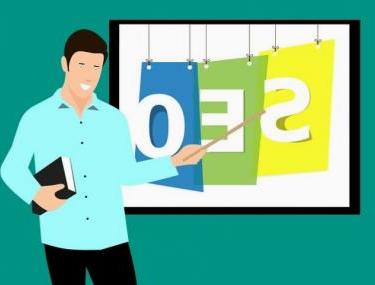Avez-vous fait un énorme effort pour avoir une présence dans les médias sociaux ? Vous êtes sur Facebook, Twitter, YouTube et Google+, mais votre public écoute-t-il ? Comment pouvons-nous, en tant que spécialistes du marketing, faire en sorte que notre contenu soit entendu et non pas simplement passé sous silence ? Il n'y a rien de plus frustrant que d'offrir un contenu cohérent et cohérent et de le voir simplement rester inactif sur vos plateformes de marketing des médias sociaux. Voici quelques articles pour vous aider à développer l'engagement de vos campagnes marketing
Les derniers articles :
3 erreurs que les start-up devraient éviter

3 petits ajustements de google adwords petits qui pourraient stimuler les clics

Les liens brisés vous retiennent ils sur google ?

Les do's et don'ts des lignes d'objets de vos emails

De meilleurs bonus pour des ventes plus importantes

Backlinks qui passent l'approbation de Pingouin

Augmenter le nombre d'abonnés à votre liste d'adresses électroniques

Construire votre réseau en ligne

Conseils de marketing des réseaux sociaux pour une bonne période des Fêtes

Marketing: Pousser ou tirer ?

Épinglez vos plans en fonction de l'intérêt que vous portez à l'entreprise

Modernisez vos campagnes d’emailing

Publicité locale en ligne qui crée des conversions

Stratégies de marketing Internet : Arrêtez de courir après les objets brillants

Stratégies de marketing Internet : Votre garantie doit-elle être révisée ?

Améliorez votre étiquette de marketing par e-mail pour une campagne plus réussie

Comment écrire des lignes d'objet de mails qui fonctionnent ?

Comment utiliser Tumblr pour les entreprises ?

Comment améliorer votre e-réputation ?

Comment espionner efficacement (et éthiquement) vos concurrents ?

À la une des journaux

Avez-vous été affecté par les dernières mises à jour de Google Panda & Penguin ?

Blogs d'invités : Le bon, le mauvais et le truand

Conseils Google Analytics : Testez-vous vos titres ?

5 façons faciles d’augmenter l’engagement de vos e-mail

5 façons d'augmenter votre taux de conversion

Email Marketing : Pourquoi la clé est dans le suivi

Emailing efficace - 10 conseils sur la création d'une grande campagne d'email marketing

Une campagne d’emailing facile et efficace

Les plus grosses erreurs de sites web

3 meilleurs conseils pour créer de bonnes annonces PPC

Avez-vous manqué le bateau avec les médias sociaux ?

Est-ce que vous donnez votre entreprise gratuitement ? Changez votre mot de passe

Emailing efficace - 10 conseils sur la création d’une grande campagne d’emailing

Comment choisir une agence de communication ?

Faire appel à un professionnel pour votre formation SEO
 La formation SEO est devenue à la mode aujourd’hui pour les entreprises puisqu’il offre beaucoup d’avantages. Il est nécessaire de suivre la meilleure formation SEO avec un professionnel.
La formation SEO est devenue à la mode aujourd’hui pour les entreprises puisqu’il offre beaucoup d’avantages. Il est nécessaire de suivre la meilleure formation SEO avec un professionnel.

 Faire appel à un professionnel pour votre formation SEOLa formation SEO est devenue à la mode aujourd’hui pour les entreprises puisqu’il offre beaucou ...Lire
Faire appel à un professionnel pour votre formation SEOLa formation SEO est devenue à la mode aujourd’hui pour les entreprises puisqu’il offre beaucou ...Lire

Voir aussi :
Votre école de formation Marketing à Lyon